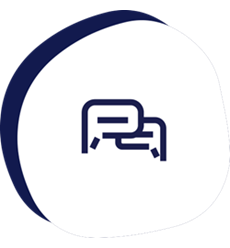Talent management describes the approach of understanding the personnel needs of a company and recruiting the right people, alongside developing, and retaining those skilled employees that an organisation needs to fulfil their strategy.
Numerous activities contribute to this process, including:
- Recruitment
- Learning and development
- Performance management
- Career progression
- Succession preparation
In a nutshell, talent management is centred around the idea that a company’s most important resource is its people, and therefore focuses on optimising the capacity and potential of a workforce to elevate the businesses’ success.
With this approach underpinning their strategy, employers may seek candidates that have highly sought-after abilities; offer ongoing opportunities to learn and develop; build in rewards for valued employees; and support advancement within the organisation.
What are the features of talent management?
Talent management requires a versatile approach to engage talented employees, retain them in the company and equip them with the skills they need for optimum performance. Employer responsibilities, in more detail, include the following:
- Talent strategy
Most workforce planning will begin with an exercise to define the skillsets needed by a company to help them achieve their objectives. - Hiring the right people
Once the company need has been defined, a business can undergo recruitment to acquire the right people that will represent their brand effectively. Recruiters need to understand how to reach those candidates, to have a process for pre-screening, and to begin to interview the prospects that show promise. - Onboarding new talent
A programme of onboarding is important to ensure new employees know that they’re valued, as well helping them connect and feel at ease with both their team and organisation. - Learning and development
Many of today’s employees expect their employers to support their ongoing development with in-house provision of tools, guidance, workshops, and training. This can be a factor in where employees choose to work. - Performance management
Regular conversations, check-ins and reviews with line managers are all strategies that can help ensure support for employees to progress in their career journey and build on their skills; also increasing engagement and making it more likely they’ll feel motivated to stay at the company for longer. - Benefits and rewards
Competitive salaries are crucial, but today the whole package of compensation is important for talented individuals seeking their next career move. Employers who want to seek new talent and retain them, need to look at their benefits and rewards holistically, outside of the wage amount. - Succession preparation
Planning for future steps in an employee’s journey can help them transition smoothly while limiting interruption to business operations. Whether their next step is promotion, resignation, or retirement - preparation is key.
What are the benefits of using talent management?
A company that supports their employees to thrive, is more likely to have a business that thrives.
Let’s look at the benefits in more detail:
- Gain sought-after talent
Companies that implement talent management strategies increase the likelihood of becoming an appealing employer that attracts new talent in an organic way. - Keep operations running smoothly
By becoming a sought-after employer companies can create a talent pipeline and even if an employee unexpectedly leaves, it’s possible to swiftly fill open positions so that operations can continue to run smoothly. - Heighten productivity
When organisations include ongoing training, coaching, learning and development in their talent management strategy, employees can increase their skills and meet their potential which ultimately boosts business efficiency. - Lower costs
If employees are engaged, motivated, and retained as the result of talent management activities, it’s usually more financially beneficial than trying to find, recruit, and develop new employees that fit well with the company. - Elevate innovation
Teams that have been recruited and assembled because of their skills and talents are more likely to develop innovative ways of solving problems and utilise advancements in technology.

Case study: Helping Aberdeen Asset Management with talent management
Aberdeen Asset Management PLC is an investment management group that includes national pension schemes, charities, and listed investment companies among its largest clients. The company controls investments that amount to more than £100 billion.
The Challenges:
When the independent company acquired Deutsche Asset Management, their employees grew in number from 780 to 1128, while their offices are spread across the world, from London and Scotland to the U.S. and the Far East. This increase in numbers and merging of businesses revealed several challenges.
- There were multiple systems holding different types of information, including Aberdeen Asset’s existing HR system, plus several standalone ‘Lotus Notes’ databases.
- Inputting new information into these systems caused too much manual data entry and the capacity for creating quality reports was minimal.
The Outcomes:
The company’s HR team invited five software organisations for conversations and assessments to find out how efficient each software solution would be, and how well they’d meet the needs of Aberdeen Assets. The organisation chose ADP’s HR.net, which brought the following outcomes.
- net is now installed at each of Aberdeen Asset’s global locations, where all employee data has been uploaded, from compensation through to employment history.
- HR reporting and processes are now much faster and more efficient.
- The need for manual data entry is now greatly reduced.
- net is alleviating workloads, by automating onboarding procedures and giving managers use of self-service functions.
- The process for compensation reviews is now much easier, with a lower number of appeals.
- While the acquisition of Deutsche Asset Management resulted in 340 additional employees, the existing HR team required just three extra HR Managers to administer the workload.
“At first, a lot of people were cautious about HR.net, but they’ve begun to rely on the new system, and they’re now much happier.”
- Nigel Rogers, Aberdeen Asset Management, HR Information Systems Manager.




